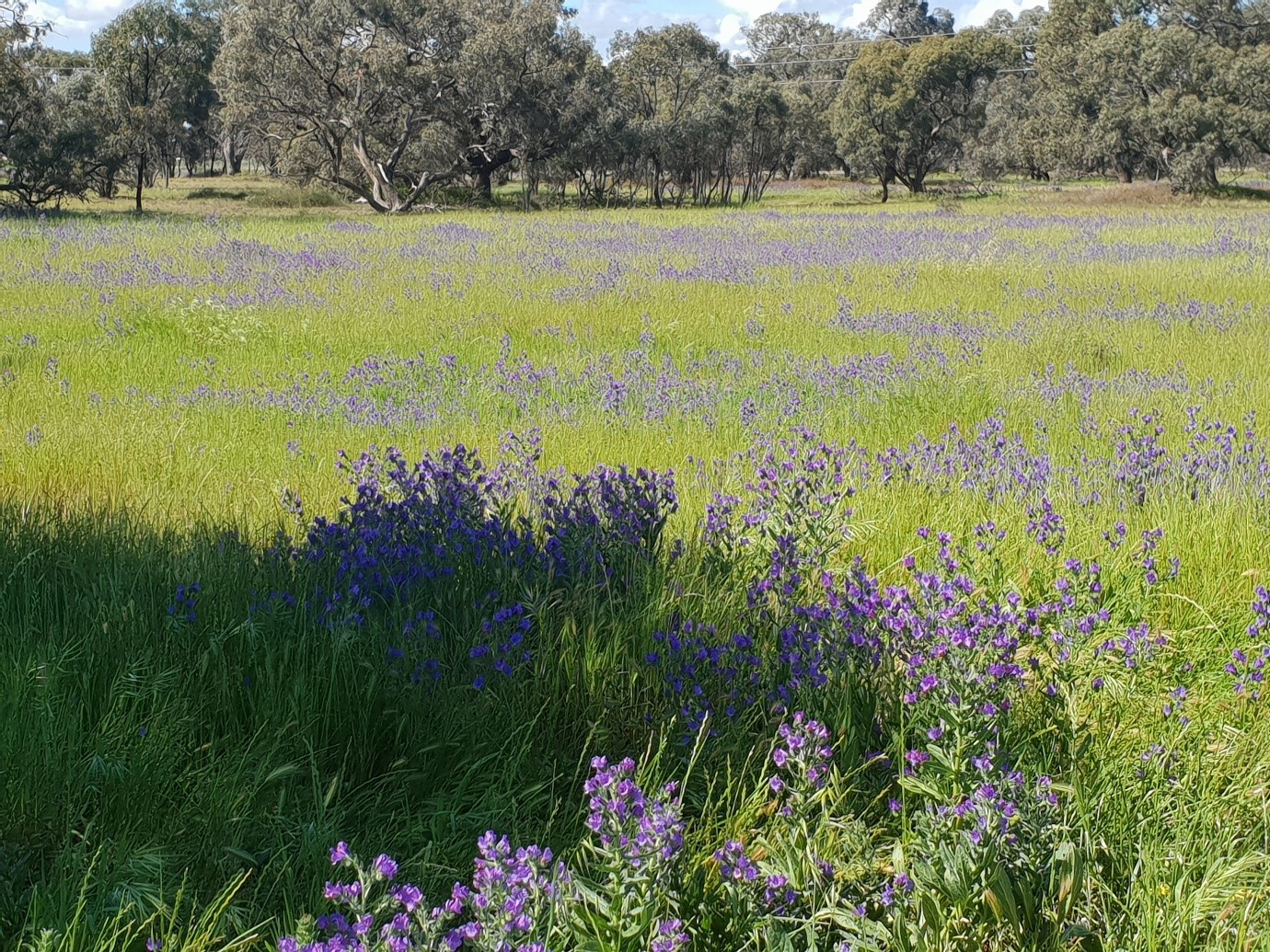Purple Haze - Paterson's curse on livestock
 PRODUCTION ADVICE - OCTOBER 2020 - ANIMAL BIOSECURITY & WELFARE
PRODUCTION ADVICE - OCTOBER 2020 - ANIMAL BIOSECURITY & WELFARE
By Linda Searle
District Veterinarian
P: 03 5881 9919 | M: 0427 629 740 | E: linda.searle@lls.nsw.gov.au
 This year has produced many unexpected things. After all the unprecedented events, now it has produced something of a throwback: paddocks of purple flowers can be seen on a scale that I haven’t observed in quite a few years. Paterson’s curse is back with a vengeance.
This year has produced many unexpected things. After all the unprecedented events, now it has produced something of a throwback: paddocks of purple flowers can be seen on a scale that I haven’t observed in quite a few years. Paterson’s curse is back with a vengeance.
Also known as ‘Salvation Jane’ in some areas, Paterson’s curse (Echium plantagineum) is a winter annual herb with distinctive purple flowers that can quickly take over an area. According to the NSW WeedWise website, a single plant can produce over 5,000 seeds per year. This leads to massive quantities of seed accumulating in the soil over several years, with seeds remaining dormant for up to five years.
So, what’s the risk to livestock?
Not only does Paterson’s curse out-compete pasture species, but it also produces toxins called pyrrolizidine alkaloids. These alkaloids cause liver damage in stock, which is irreversible and cannot be treated. It is also ongoing - as the affected liver cells die, the healthy liver cells next to them take up the released alkaloids and in turn are then poisoned by them. The summer weed heliotrope also contains pyrrolizidine alkaloids, which can contribute to ongoing liver damage.
Different livestock species have different susceptibility to poisoning by Paterson’s curse due to the way that they break down pyrrolizidine alkaloids.
Pigs and horses are highly susceptible as they have no ability to break down the alkaloids in their stomachs.
Cattle are moderately susceptible as the rumen contains bugs that can break down the alkaloids before they reach the liver, which prevents some damage. However, if they have no choice but to eat large amounts of Paterson’s curse over a period, they can still end up with chronic liver failure.
Sheep and goats are the least susceptible to poisoning. Their rumen does a better job of breaking the alkaloids down into less toxic parts. Toxicity in sheep is usually due to continued exposure over several years, especially in combination with years of ingestion of heliotrope.
Chronic liver damage can lead to death from chronic copper poisoning or chronic liver failure. Clinical signs include weight loss and jaundice (yellowing) of the carcass, or the mucous membranes such as around the eyes. Sometimes you see photosensitisation, a sunburn-like reddening and peeling of the skin in non-pigmented, non-woolled areas. Pigs, horses and cattle can sometimes show nervous signs of blindness, wandering and head-pressing. This is due to the damaged liver not filtering toxins from the body, which can then start to affect the brain.
It is generally believed that the amount of toxin in the plants increases as the plant matures. For this reason, it is usually recommended to remove stock once flowering starts to try and minimise poisoning. While the palatability of the plant decreases as the plant ages, it is not safe to assume that stock will not eat mature plants.
Preventing the spread of Paterson’s curse into unaffected areas is the most effective means of preventing issues. Once the weed is established it usually takes several years of integrated weed management to control.
Prevention is always better than cure. Limiting exposure to those purple flowers now can help prevent a lot of dead yellow stock later.